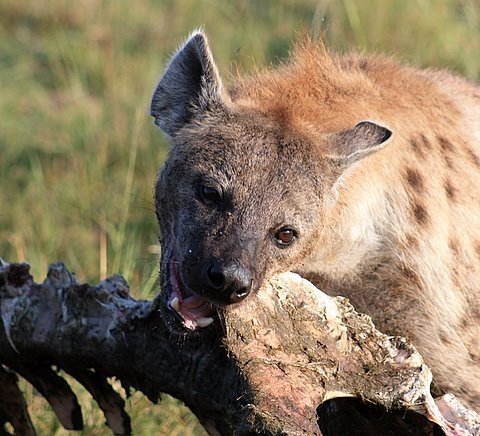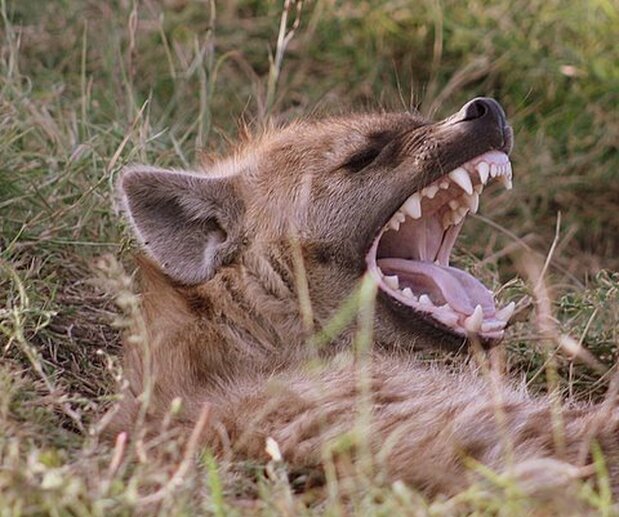|
Author: Kate A hyena's mouth is a pretty intimidating sight. But, as long as you're not a tasty ungulate, it's also a fascinating one. Surprisingly, it's not those deadly-sharp canines (those dagger-like teeth in front) that enable hyenas to do so much damage. Instead, it's the rather innocuous-looking premolars, located farther back along the jaws, that give hyenas their bone-cracking abilities. Hyenas will carefully position a bone on one side of their mouth and bite down. Hard. Really hard.  From measuring hyenas' teeth, we can gather all sorts of information about them. We can tell an individual's rank (since low-rankers must crack far more bone than high-rankers, their premolars are much more worn), we can tell an individual's age (older animals' teeth are more worn than younger animals), and whether a hyena is "right-sided" or "left-sided" (just like we prefer to use one hand to write or to throw a ball, hyenas tend to use one side of their mouth more often to crack bone). Now that I think about it, maybe that's why our hyenas steal soap...it gives their jaws a nice rest from all that work.
0 Comments
Your comment will be posted after it is approved.
Leave a Reply. |
About
Notes From Kenya is a blog run by the students in the Holekamp Lab at Michigan State University, College of Natural Science, East Lansing, Michigan, U.S.A. Archives
July 2020
Categories |

 RSS Feed
RSS Feed